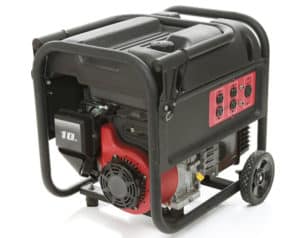Before buying a portable generator, you should determine what you need to power, calculate the necessary wattage, and choose a model that meets your household’s or work site’s energy demands safely and efficiently. Preparing properly ensures you can keep essentials like your refrigerator, sump pump, furnace, and lights running during power outages without overloading your generator or risking electrical hazards. It’s also important to have a licensed electrician install a transfer box, use outdoor-rated extension cords, and follow all safety guidelines to prevent carbon monoxide exposure. By calculating your energy needs, understanding wattage limits, and following proper installation and safety procedures, you can invest in the right generator for your home, campsite, or job site and ensure reliable power whenever you need it most.
Here are a few of the most important steps to take before heading off to your favorite hardware store:
 Step 1: Determine what you want to be powered by the generator. The basics for me are the refrigerator, the sump pump, furnace and some general lighting in one room of the house where my family and I can gather, charge our phones or watch a movie. Ideally, I would have these appliances and the family room wired to a transfer box next to the house’s electrical panel.
Step 1: Determine what you want to be powered by the generator. The basics for me are the refrigerator, the sump pump, furnace and some general lighting in one room of the house where my family and I can gather, charge our phones or watch a movie. Ideally, I would have these appliances and the family room wired to a transfer box next to the house’s electrical panel.
It is important to have an electrician install the box to be sure it is done safely. An improperly installed box could allow electricity to flow back into the power company’s grid and kill a worker trying to restore power to your house.
Step 2: Once you know what you need powered, you can use a wattage calculator like this handy appliance wattage calculator from Consumer Reports. In my example, I checked the boxes for a refrigerator, gas furnace, sump pump, a light bulb, 40-inch TV and a VCR. My total running wattage was 2,100. You should only run your generator at half of the rated wattage to get maximum run time. This improves fuel efficiency and leaves you the needed start-up wattage for the largest appliance. Warning: If you do not use the half-capacity rule of thumb or factor in startup wattage, you will likely trip the circuit breaker on the generator when your largest appliance turns on.
If you really want to get specific with the appliances you are running and their start and run wattage, we have this energy usage meter to track consumption. A nice thing about the meter is that it tracks the voltage being supplied by the generator which should be 120 volt, 60 hertz. If you have low voltage or the frequency is too low, your appliance could be damaged or not operate properly. Another method is to multiply the voltage and amps the appliance draws to determine the wattage (Volts x Amps = Watts).
Step 3: In my example, I went to my local hardware or equipment dealer and priced out generators in the 4,500-5,500 watt range. Other features to consider are electric start, noise, warranty and portability. I decided that I don’t need an electric-start generator. I found most generators within that wattage range had similar warranties and physical dimensions. My choice is a 5500 Briggs and Stratton generator, which is available for about $799. That is a small price to pay for peace of mind in the event of a power outage. I’ll definitely make that investment.
What to do after you purchase the generator
- Read the owner’s manual thoroughly.
- Make sure that installation is done by a qualified electrician. Again, never plug an extension cord running from a generator into a home’s electrical panel.
- If you plan to run extension cords from the generator directly to appliances inside of the home, make sure that you use heavy-duty, outdoor-use extension cords.
Generator safety tips
- Always use a generator outdoors, far away from your home’s doors, windows and vents.
- Never operate generators in homes or garages, even if well ventilated. Generators emit carbon monoxide, a deadly, odorless, transparent gas.
- Follow the owner’s manual’s operation instructions.
Have a broken generator? RepairClinic sells replacement parts and maintenance products for your specific generator model.
Comments are closed.